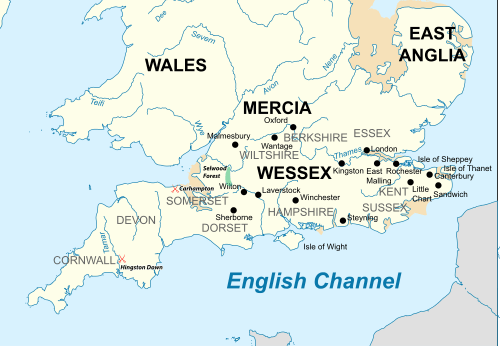Battle of Hingston Down
The Battle of Hingston Down took place in 838 at Hingston Down in Cornwall between a combined force of Cornish and Vikings on the one side, and West Saxons led by Egbert, King of Wessex on the other. It resulted in a West Saxon victory.

The British kingdom of Dumnonia, which covered Devon and Cornwall, survived into the early eighth century, when Devon was conquered by Wessex. Cornwall survived for another century, but in 815 it was ravaged by an army under Egbert. In 838 the Cornish allied with "a great ship army" of Vikings to fight the West Saxons, but were defeated at Hingston Down. This was the last recorded battle between the Cornish and the West Saxons, and resulted in the loss of Cornish independence. The last known king of Cornwall, Dungarth, died in 875, but he is thought to have been an under-king subject to Wessex.[1]
References
- ↑ Charles-Edwards, pp. 428-31; Padel, "Cornwall"; Davies, p. 342; Stenton, p. 235
Sources
- Charles-Edwards, Thomas (2013). Wales and the Britons 350–1064. Oxford University Press. ISBN 978-0-19-821731-2.
- Davies, John Reuben (2013). "Wales and West Britain". In Stafford, Pauline. A Companion to the Early Middle Ages: Britain and Ireland c.500-c.1100. Wiley-Blackwell. ISBN 978-1-118-42513-8.
- Padel, O. J. (2014). "Cornwall". In Lapidge, Michael; Blair, John; Keynes, Simon; Scragg, Donald. The Wiley Blackwell Encyclopedia of Anglo-Saxon England (2nd ed.). Chichester, UK: Wiley Blackwell. ISBN 978-0-470-65632-7.
- Stenton, Frank (1971). Anglo-Saxon England (3rd ed.). Oxford University Press. ISBN 978-0-19-280139-5.
Coordinates: 50°31′16″N 4°14′50″W / 50.521°N 4.2473°W